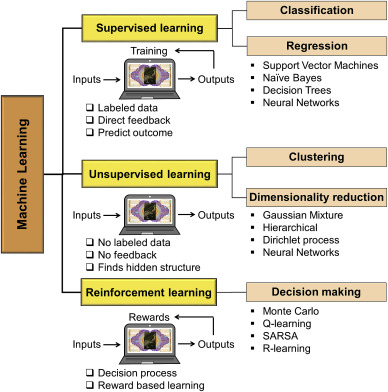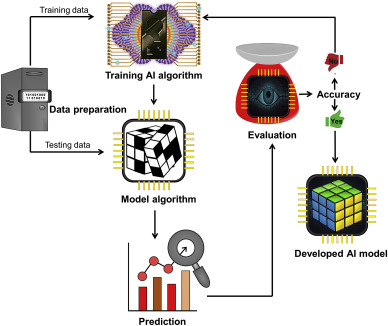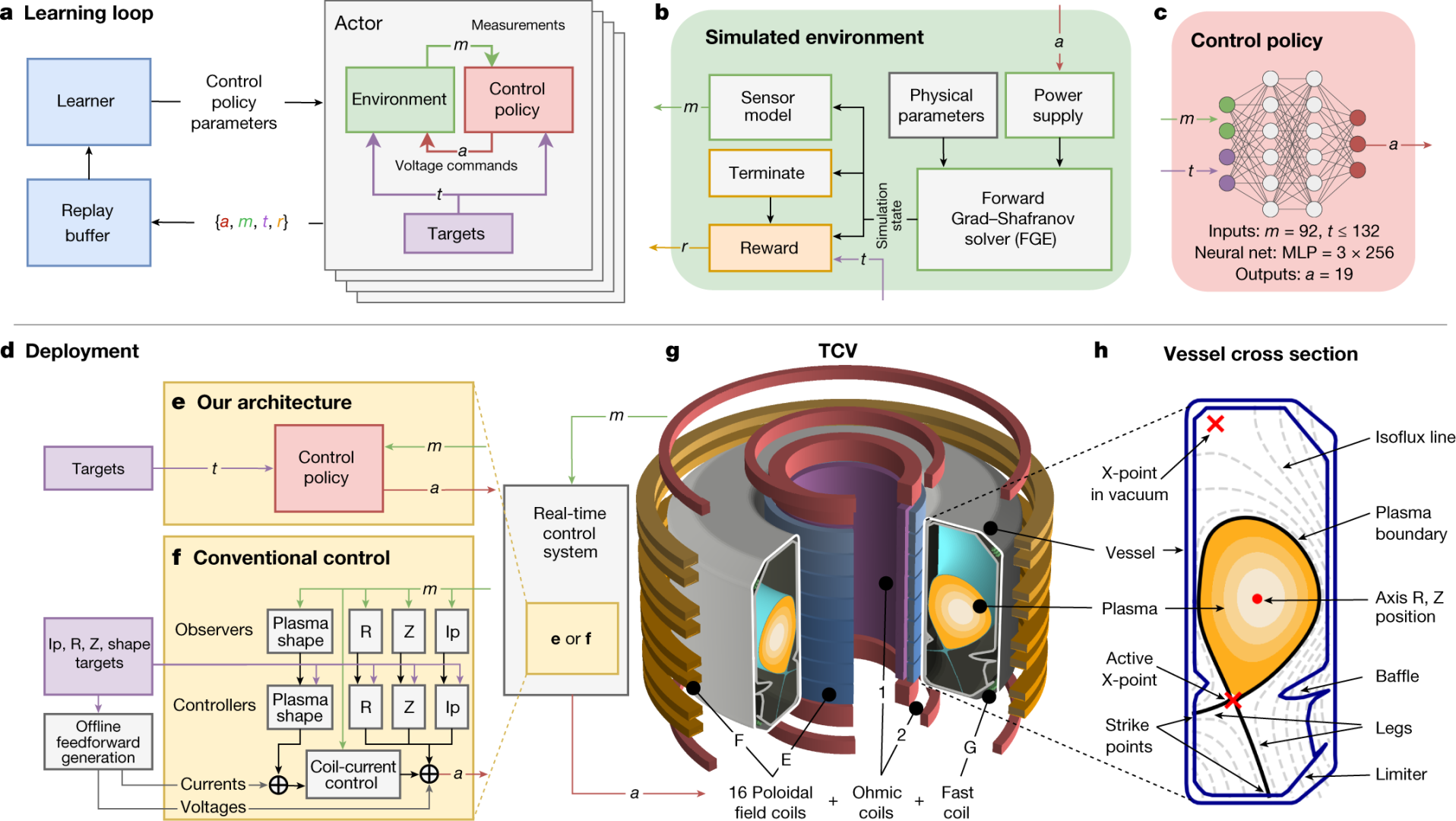Comments
- No comments found

Machine learning (ML) in the nuclear sector is rapidly gaining momentum.
The nuclear industry has always been at the forefront of innovation, and ML is just another tool in the industry's arsenal to improve safety, efficiency, and overall performance. With the amount of data generated in nuclear power plants, ML algorithms can identify patterns and anomalies that are not visible to the human eye. This data can be used to optimize plant performance, reduce costs, and improve safety.

In this article, we will explore the various applications of ML in the nuclear sector, including predictive maintenance, anomaly detection, and fault diagnosis. We will also discuss some examples of how these applications are being used in the industry and the benefits they bring. We will also explore the potential dark side of ML in the nuclear sector, including the risks associated with the use of autonomous systems, the potential for cyber attacks, and the ethical implications of using ML in the industry.
The benefits of using machine learning in the nuclear sector are numerous. ML can improve plant efficiency by optimizing operations and reducing downtime. By predicting when equipment will require maintenance, ML can also reduce maintenance costs and improve safety by avoiding unexpected equipment failures. ML can also improve fault diagnosis, allowing plant operators to quickly identify the root cause of a problem and take corrective action.
One example of the benefits of ML in the nuclear sector is the use of predictive maintenance at the Palo Verde Nuclear Generating Station in Arizona. The station implemented a predictive maintenance program that uses ML algorithms to analyze data from vibration sensors on pumps and turbines. The program reduced unscheduled downtime by 20% and saved the station $1.5 million in maintenance costs in the first year of operation.
Another example is the use of anomaly detection at the Daya Bay Nuclear Power Plant in China. The plant implemented an anomaly detection system that uses ML algorithms to monitor reactor coolant system data. The system identified an anomaly in the coolant system, allowing plant operators to take corrective action before a more serious issue occurred. This prevented a potential reactor shutdown and saved the plant downtime and maintenance costs.

Predictive maintenance is an ML application that uses data to predict when equipment will require maintenance, allowing plant operators to schedule maintenance activities before a failure occurs. Predictive maintenance can reduce the number of unexpected equipment failures, which can be expensive and potentially dangerous in a nuclear power plant.
One example of predictive maintenance in the nuclear industry is the use of vibration sensors on pumps and turbines. ML algorithms can analyze the data generated by these sensors to identify patterns that indicate when a pump or turbine is about to fail. By predicting the failure of a pump or turbine, plant operators can schedule maintenance activities during planned outages, avoiding unscheduled downtime and reducing the risk of a catastrophic failure.
Another example is the use of ML algorithms to predict when nuclear fuel rods need to be replaced. Fuel rods have a limited lifespan and need to be replaced periodically. By analyzing data on reactor performance and fuel usage, ML algorithms can predict when fuel rods will need to be replaced, allowing plant operators to schedule replacements during planned outages.
Anomaly detection is an ML application that identifies anomalies in data that may indicate a problem. In the nuclear sector, anomaly detection can be used to identify unusual patterns in reactor data, indicating a potential issue with the reactor.
One example of anomaly detection in the nuclear industry is the use of machine learning algorithms to monitor reactor coolant systems. By analyzing data on coolant flow, pressure, and temperature, ML algorithms can identify anomalies that may indicate a problem with the coolant system. This allows plant operators to take corrective action before a more serious issue occurs.
Fault diagnosis is an ML application that uses data to identify the root cause of a problem. In the nuclear sector, fault diagnosis can be used to identify the cause of equipment failures or anomalies in reactor data.
One example of fault diagnosis in the nuclear industry is the use of ML algorithms to diagnose faults in steam turbines. Steam turbines are critical components in nuclear power plants, and their failure can result in significant downtime and cost. By analyzing data on turbine performance, ML algorithms can identify the root cause of a problem, allowing plant operators to take corrective action quickly.
Machine learning (ML) has been hailed as a transformative technology that can improve efficiency, safety, and cost-effectiveness in the nuclear sector. However, as with any new technology, there are potential risks and drawbacks associated with its use.
One example of the potential risks of machine learning in the nuclear sector is the use of autonomous systems for the inspection of nuclear plants. In 2018, a robot used for the inspection of the Fukushima Daiichi nuclear power plant in Japan became stuck in debris, highlighting the potential risks associated with the use of autonomous systems in hazardous environments.
Another example is the potential for cyber attacks on nuclear facilities. In 2017, the WannaCry ransomware attack affected several nuclear facilities in the United States, highlighting the vulnerability of these facilities to cyber attacks.

Deploying autonomous systems in the nuclear sector is a growing trend. Autonomous systems can perform tasks that would be difficult or dangerous for humans, such as inspecting reactor components or cleaning contaminated areas. However, the use of autonomous systems also comes with risks, particularly in the context of machine learning.
One potential risk is the loss of human control over the system. As autonomous systems become more sophisticated, they may make decisions independently, without input from human operators. This could lead to unintended consequences, such as the system taking actions that are not in line with human values or ethics.
Another potential risk is the potential for the system to make mistakes. ML algorithms are only as good as the data they are trained on, and if the data is incomplete or biased, the system may make incorrect decisions. In the context of the nuclear sector, these mistakes could have catastrophic consequences.
The use of machine learning in the nuclear sector also creates potential vulnerabilities for cyber attacks. ML algorithms rely on large amounts of data to operate effectively, and if this data is compromised, it could lead to serious security breaches.
One potential target for cyber attacks is the data used to train ML algorithms. If this data is accessed or altered by a malicious actor, it could lead to the ML algorithm making incorrect decisions. In the context of the nuclear sector, this could lead to serious safety issues.
Another potential target for cyber attacks is the autonomous systems themselves. If these systems are compromised, they could be used to carry out malicious actions, such as damaging equipment or stealing sensitive data.
The use of ML in the nuclear sector also raises ethical questions. For example, the use of autonomous systems raises questions about responsibility and accountability. If an autonomous system makes a mistake, who is responsible? Should the manufacturer of the system be held accountable, or should it be the operator of the system?
Another ethical question is the potential for bias in ML algorithms. ML algorithms are only as unbiased as the data they are trained on, and if the data is biased, the algorithm may make decisions that discriminate against certain groups. In the context of the nuclear sector, this could lead to discrimination against certain workers or communities.

Machine learning in the nuclear sector has the potential to enhance plant efficiency, reduce costs, and improve safety. Predictive maintenance, anomaly detection, and fault diagnosis are just a few examples of how ML can be used in the industry. By analyzing large amounts of data, ML algorithms can identify patterns and anomalies that are not visible to the human eye, allowing plant operators to take corrective action before a problem occurs.
The benefits of machine learning in the nuclear sector are already being realized at plants around the world. As the technology continues to evolve, we can expect to see more innovative applications of ML in the industry. The nuclear industry has always been at the forefront of innovation, and the use of ML is just another example of how the industry is using cutting-edge technology to improve performance and safety.
While the use of ML in the nuclear sector has the potential to improve safety, efficiency, and cost-effectiveness, it also comes with potential risks and drawbacks. The use of autonomous systems, the potential for cyber attacks, and the ethical implications of using ML in the industry are all important considerations that must be addressed as the technology continues to evolve.
To mitigate these risks, it is important for the nuclear industry to invest in cybersecurity measures, ensure that machine learning algorithms are trained on unbiased data, and establish clear guidelines for the use of autonomous systems. By addressing these potential risks and drawbacks, the nuclear industry can ensure that the benefits of ML are realized while minimizing the potential risks.
Ultimately, the success of machine learning in the nuclear sector will depend on how well the industry can balance the potential benefits with the potential risks. While the benefits of ML are clear, it is important to ensure that the technology is deployed in a responsible and ethical manner. By doing so, the nuclear industry can continue to lead the way in innovation while ensuring the safety and security of workers and the public.
Leave your comments
Post comment as a guest